Porsche Boxster 981 – The Story
The perfect convertible sports car.
981 Story / 981 Timeline / 981 Model Guides / MY Differences / Image Gallery / Specs / Misc Data / FAQs / News
Type: 981
Generation: Third Generation
Manufacturer: Porsche AG
Production Years: 2012 - 2016
Model Years: 2013 - 2016
Body Style: 2-Door Roaster
Layout: Rear mid-engine, RWD
Engines: 2.7 L MA1.22 flat-6, 3.4 L MA1.23 flat-6, 3.8 L MA1.24 flat-6
Transmission: 6-speed manual, 7-speed PDK
Official photos: January 12 2012, GTS March 19, 2014
Premiere: March 6, 2012 at Geneva motor show, GTS April 20, 2014 at Auto China in Beijing
Market launch: April 14, 2012 (as a 2013 model), GTS May 2014
The third generation of Boxster was the 981 generation and frankly it is our favorite here at Stuttcars. Changes includes a body shell that was 17 percent lighter than that of the 987 thanks to an increased usage of aluminum construction, along with strategic use of high-strength steel in key areas. This kept the curb weight to around 3,000 lbs, despite being a larger car than its predecessor. It was just as slippery as the 987, with the 98l's Cd at a remarkable 0.30. The 981 Boxster had a fully automatic top; the driver no longer had to manually latch or unlatch the convertible top from the windshield header as in the 986 and 987. The lightweight top was composed of magnesium panels, aluminum and steel frame bows, and plastic covers.
The 981 Boxster was powered by the MA1-series flat-six, which were quite similar to those used in the 987.2. The base engine's displacement was actually reduced by 200cc to 2.7 liters, but this was more than made up for by replacing the base 987.2's port fuel injection system with DFI, which allowed a higher compression ratio of 12.5:1, which was the same as the 3.4-liter engine of the Boxster S. Otherwise, the 981 powerplants had the same features as the big brother 991.1 generation 911, with assembled camshafts, a thermal management system of vacuum-operated switches and valves to help optimize engine warmup and cooling system management. The engine management system was used in concert with the electrical gateway system control unit to orchestrate the operation of the oft-maligned auto stop/start system.
A six-speed manual was standard on both the base car and the Boxster S, with slightly different gear ratios and an improved torque capacity for the latter. The optional "Sport Chrono" package added dynamic transmission mounts, which functioned similarly to the optional magnetorheological mounts used on the engine side of the rear-engined 991. The mounts automatically stiffened as necessary by varying electrical current through a fluid containing magnetic particles. The optional PDK gearbox continued on similar internals as its predecessor, but some new features such as a fuel-saving "coasting" mode and the ability to select neutral by engaging both shift paddles.
The 981's chassis and suspension were similar to the 991, with a 60 mm longer wheelbase and increased front track by 36-48 mm depending on front wheel offset. The front suspension geometry was revised to increase its resistance to braking dive, and the rear suspension had much greater resistance to dynamic toe changes than did that of the 987. Chassis control electronics also evolved, with the ninth generation of Porsche Stability Management offering enhanced functions such as holding the vehicle on a steep incline to aid hill starts, improved Porsche Active Suspension Management (PASM), and optional Porsche Torque Vectoring (PTV). PTV actively braked the inside rear wheel during cornering, which enhanced turn-in and agility. The steering itself was the same as the 991, with an electronically assisted power steering rack featuring revised steering geometry to allow a tighter turning radius of 10.36 meters.
This graphic breaks out the third generation Porsche Boxster in terms of timelines and how to tell all the models apart. Click on the image to see it in higher definition. The third generation Boxster is known as the 981 and ran from 2013 to 2016 model years.
The Porsche Boxster 981, produced from 2012 to 2016, remained largely consistent in terms of core design and engineering, but there were notable changes across the model years—especially in terms of variant introductions and equipment updates. Here's a breakdown of key differences year by year:
The 981 Boxster debuted as an all-new generation, replacing the 987. It featured a new chassis, a longer wheelbase, wider track, and aluminum-intensive construction. The interior was redesigned with the Panamera-style rising center console, and the exterior gained sharper lines inspired by the 918 Spyder and 911 (991). Two models were available at launch:
Boxster with a 2.7L flat-six (265 hp)
Boxster S with a 3.4L flat-six (315 hp) Transmission options included a 6-speed manual or 7-speed PDK.
This was the first full model year of the 981. There were no major mechanical changes, but Porsche continued to expand options. This year solidified the model’s reputation for being a major leap over the 987 in refinement and performance.
Equipment options like PASM (Porsche Active Suspension Management), Sport Chrono, and PCCB (ceramic brakes) were available across both variants.
Still no major changes to the base or S models. However, this year is notable for the gradual increase in customization options through Porsche Exclusive, including new interior trims, colors, and bespoke configurations.
Reliability feedback from the early production run had begun to solidify the 981's reputation as one of the more dependable modern Porsches.
A major expansion year for the 981 Boxster lineup
Boxster GTS was introduced, featuring 330 hp from an uprated 3.4L engine, standard PASM, Sport Chrono Package, and unique exterior styling cues (blackened trim, revised front/rear fascia). It sat above the S as the most performance-focused Boxster yet.
The GTS came with either a 6-speed manual or PDK and was praised for blending everyday usability with heightened performance and exclusivity.
This final year of the 981 generation brought the most exciting variant
Boxster Spyder launched with a 3.8L flat-six producing 375 hp—borrowed from the 911 Carrera S—and paired only with a 6-speed manual. It featured a lightweight fabric roof, no infotainment by default, lowered PASM suspension, and aggressive bodywork. It was a spiritual successor to the 987 Spyder and celebrated for its purity and engagement.
This was also the last year of the naturally aspirated flat-six Boxster before the move to the turbocharged 718 generation.
These cars were slightly faster and more performance focused than the first and second generation Boxster, but saw improvements made over the years which you can see below. The engine upgrades and tweaks to hardware over the years meant the 981 Boxsters were strong performers in most areas.
The Porsche Boxster was a revelation when it was first released, but the updates in the second generation made it a more complete package as a sports car. By the time the third generation Boxster 981 rolled around the journalists and reviewers who covered the launch were smitten by just how good the Boxsters were. By this time, most people were arguing whether you ever needed to choose a 911 over a Boxster anymore.
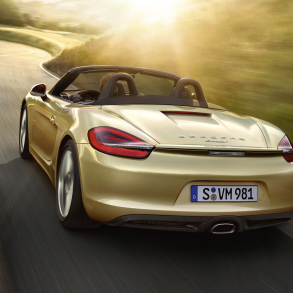
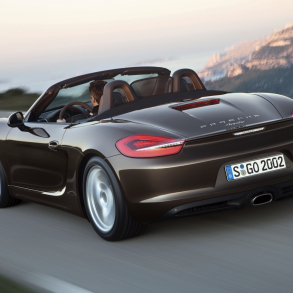
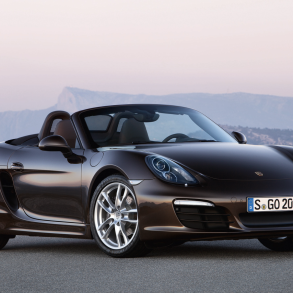
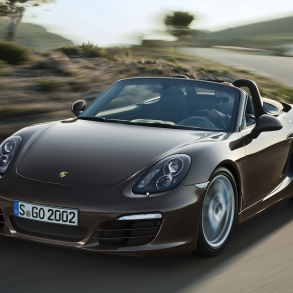
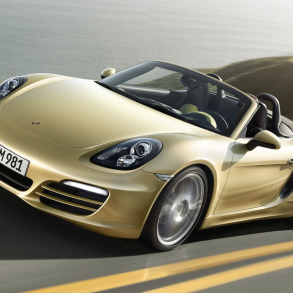

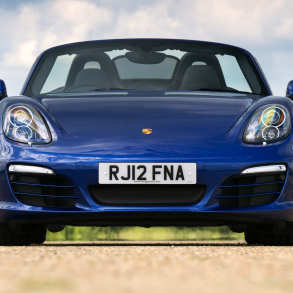

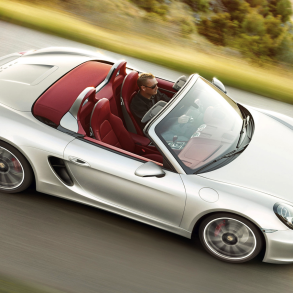
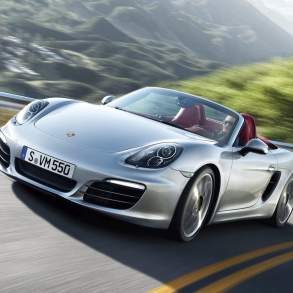

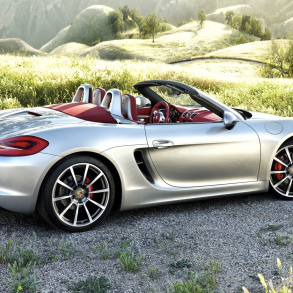
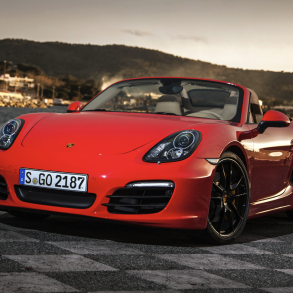

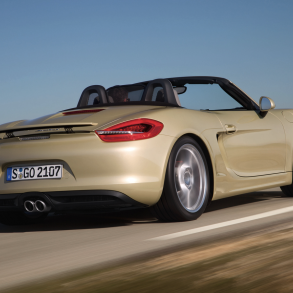
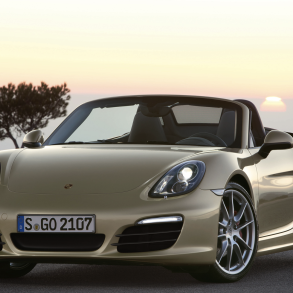
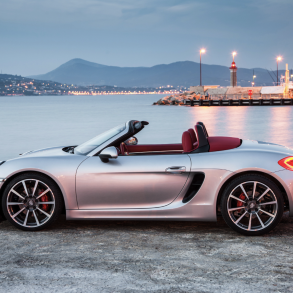
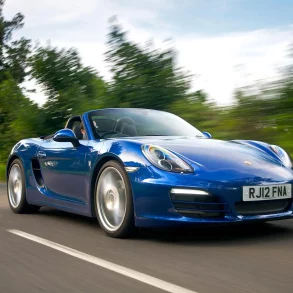

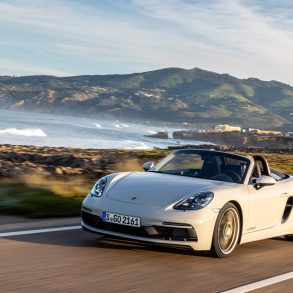
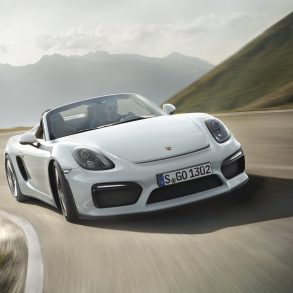

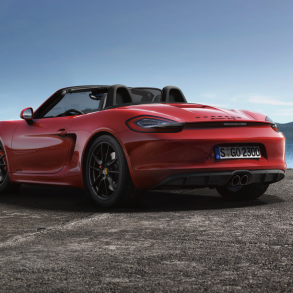

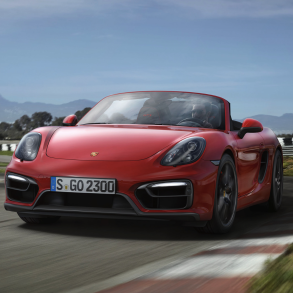
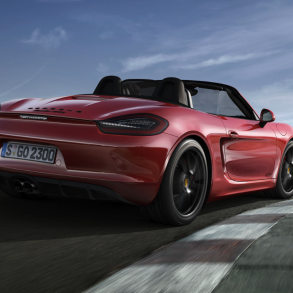
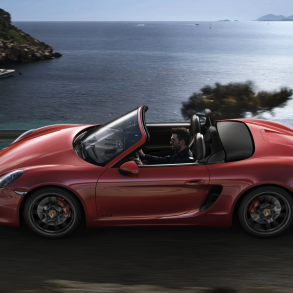
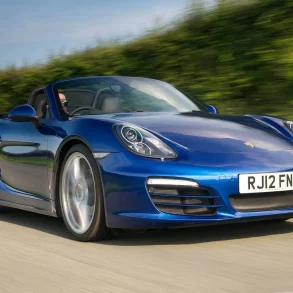
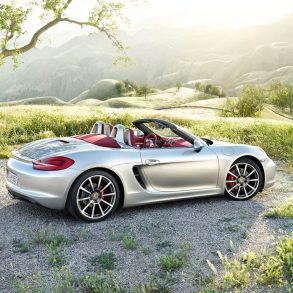
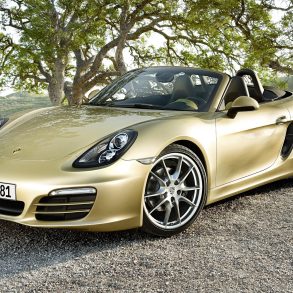
The video reviews below show you how strongly people felt about the cars. Enjoy our interactive galleries and awesome videos of the third generation 981 Porsche Boxster.
We dig into some of the data surrounding the third generation Porsche Boxster, including production numbers, specifications, chassis numbers, sales brochures, equipment codes, maintenance schedules, common problems, colors and much more.
The third-generation Porsche Boxster (981), which debuted in 2012, was designed under the leadership of Michael Mauer, who has been the head of design at Porsche since 2004. Mauer and his team were tasked with evolving the Boxster into a more mature, athletic, and upscale sports car while maintaining its mid-engine roadster DNA.
The 981 generation marked a significant departure from the softer lines of the 987. It adopted sharper creases, a wider stance, and design cues more in line with the 911 and Carrera GT, including the prominent side air intakes and tauter proportions. The interior was also completely overhauled, featuring the rising center console first introduced in the Panamera and used across the Porsche lineup, giving the Boxster a more premium and performance-oriented cockpit feel.
Mauer's work on the 981 Boxster is often praised for giving the car a visual presence that matched its dynamic abilities — turning what had sometimes been seen as the “entry-level Porsche” into a standout sports car in its own right.
The Porsche Boxster (981) third generation was produced from 2012 to 2016.
2012 marked the debut of the 981 Boxster (as a 2013 model year in many markets), featuring a new chassis, improved styling, and a significant weight reduction compared to its predecessor.
2013–2016 were the main production years, with various updates and new variants introduced during this period.
2016 was the final model year for the 981 Boxster before it was replaced by the 982-generation 718 Boxster in 2017, which brought turbocharged four-cylinder engines and a new naming convention.
The 981 era is especially celebrated for being the last naturally aspirated Boxster generation and is often viewed as a high point in terms of design purity, driving dynamics, and overall character.
The market value of a third-generation (981) Porsche Boxster, produced from 2012 to 2016, varies widely depending on the model variant, mileage, condition, and specification. As of 2025, the base Boxster typically sells for around $33,900, while the more powerful Boxster S commands approximately $43,300. The highly regarded Boxster GTS, available only in 2015 and 2016, averages about $60,700. At the top of the range, the 2016 Boxster Spyder—praised for its raw, purist driving experience—fetches an average of $92,100, with exceptional examples selling for over $100,000.
On average, across all trims, the 981 Boxster holds a market value of about $52,200. The highest publicly recorded sale was $120,000 for a pristine 2016 Boxster Spyder with a 6-speed manual in March 2023, while the lowest was just $16,700 for an early 2013 base model with high mileage in January 2025. Recent transactions suggest continued demand and strength in the used market, with examples like a 2013 Boxster S selling for $43,000 and a well-kept 2016 Spyder going for nearly $90,000.
Market trends indicate that the 981 Boxster has not only held its value well but, in some cases, appreciated—especially for high-spec or limited-edition models. Enthusiast interest and the car’s reputation as the last naturally aspirated Boxster generation have helped solidify its desirability. Anecdotally, some owners have reported that their well-optioned Boxster S models have nearly doubled in value since the beginning of the decade, reflecting how strong the collector and driver market has become for this generation.
The transition from the second-generation Porsche Boxster (987) to the third-generation (981) marked a major leap forward in both design and engineering. While the 987 refined the original Boxster formula, the 981—launched in 2012—completely modernized it, both visually and dynamically.
The 987 (2005–2012) was an evolution of the 986, maintaining a similar silhouette but with more aggressive styling, better build quality, and important technical upgrades in the 987.2 (like direct fuel injection and the PDK dual-clutch gearbox). It was still compact, analog in feel, and relatively understated in its proportions.
In contrast, the 981 Boxster (2012–2016) introduced a new, larger platform and a totally redesigned body, with styling cues taken from the 991-generation 911 and Porsche’s mid-engine supercar concept heritage. It featured more pronounced creases, larger intakes, wraparound LED lighting, and a lower, wider stance. The interior was also completely revamped with a more premium, driver-focused layout inspired by the Panamera and 911, elevating the Boxster from entry-level sports car to a truly high-end experience.
Mechanically, the 981 benefited from an all-new lightweight aluminum chassis, a revised suspension setup, electronic power steering, and more powerful flat-six engines. The car was not only lighter and more rigid, but also offered sharper dynamics and greater refinement. The 981 also moved away from the traditional hydraulic steering, which some enthusiasts lamented for its reduced road feel—but most agreed the new chassis made up for it.
In short, while the 987 is seen as the last of the “classic-feeling” Boxsters with its analog charm and compact size, the 981 is considered a thoroughly modern sports car with vastly improved design, performance, and luxury—more Cayman and 911 in spirit than ever before.
The difference between the second-generation Porsche Boxster (987) and the third-generation Porsche Boxster (981) is substantial, reflecting a major leap in design, performance, and overall refinement. While both retain the mid-engine, rear-wheel-drive layout and Porsche’s signature roadster DNA, the 981 is a significantly more modern and capable machine across nearly every dimension.
One of the most noticeable differences lies in the design. The 987, which was produced from 2005 to 2012, carried forward the rounded, softer styling cues of the original Boxster (986) with evolutionary changes—slightly wider fenders, a more aggressive front fascia, and a more refined interior, especially after the 2009 facelift (987.2). In contrast, the 981, introduced in 2012, took a big step toward a sharper, more muscular aesthetic. It features wider tracks, a longer wheelbase, more sculpted side intakes, and styling heavily inspired by the Carrera GT and 991-generation 911. The interior of the 981 also adopted the “rising” center console design from the Panamera, giving the cabin a more upscale and driver-focused feel.
Mechanically, the leap is even more profound. The 987.1 models (2005–2008) used M97 engines, which were prone to intermediate shaft (IMS) bearing failures—an issue resolved in the 987.2 models (2009–2012) with the introduction of direct fuel injection and the updated 9A1 flat-six engines. The 981 continued with the 9A1 engines, offering both improved power and efficiency while maintaining the signature naturally aspirated character. In addition, the 981 platform benefited from significant weight savings due to aluminum construction and boasted a stiffer chassis, better suspension geometry, and improved electric power steering.
From a driving perspective, the 981 offers more precision, composure, and refinement. It is both faster and more comfortable, bridging the gap between the Boxster and the 911 more than ever before. For buyers, the 981 is often seen as a “sweet spot” in the Boxster lineup: it retains the naturally aspirated engines and excellent driver feedback while adopting more modern aesthetics, tech, and build quality. The 987, especially in its 987.2 guise, remains a rewarding and more analog experience, but it lacks the polish and presence of its successor.
The second-generation Porsche Boxster (987), produced from 2005 to 2012, delivered noticeably improved performance over the 986, especially with the introduction of the 987.2 refresh in 2009. Here's how fast each version was, depending on the model and engine:
Base Boxster (2.7L flat-six, ~240–245 hp)
0–60 mph: ~5.9 to 6.2 seconds
Top speed: ~160 mph
Boxster S (3.2L and later 3.4L flat-six, ~280–295 hp)
0–60 mph: ~5.1 to 5.4 seconds
Top speed: ~169–171 mph
Base Boxster (2.9L DFI flat-six, 255 hp)
0–60 mph: 5.5 seconds (manual), 5.4 seconds (PDK)
Top speed: ~163 mph
Boxster S (3.4L DFI flat-six, 310 hp)
0–60 mph: 4.9 seconds (manual), 4.7 seconds (PDK)
Top speed: ~170–172 mph
The 987.2 generation also introduced the PDK dual-clutch transmission, which shaved precious tenths off acceleration times and helped make the car feel even more responsive and modern. While not outright supercar-fast, the 987 Boxster was—and still is—highly regarded for its balance, composure, and usable performance in real-world driving.
The third-generation Porsche Boxster (981), produced from 2012 to 2016, delivered impressive performance across its lineup, with each variant offering a naturally aspirated flat-six engine and engaging mid-engine dynamics. While exact speeds vary by model and transmission, all 981 Boxsters were genuinely quick, especially when equipped with Porsche's PDK dual-clutch transmission and optional Sport Chrono Package.
The base Boxster, powered by a 2.7-liter flat-six producing 265 horsepower, could sprint from 0 to 60 mph in 5.5 seconds with the 6-speed manual and as quickly as 5.2 seconds with the PDK. With Sport Chrono, that time dropped to 5.0 seconds, and top speed hovered around 164 mph.
The Boxster S, featuring a 3.4-liter flat-six with 315 horsepower, cut the 0–60 mph time to 4.8 seconds with the manual and 4.5 seconds with the PDK and Sport Chrono. Its top speed was approximately 172 mph, making it a serious performance machine in its class.
The Boxster GTS, introduced for 2015–2016, bumped output to 330 horsepower and was even sharper. It could hit 60 mph in 4.4 seconds with PDK and Sport Chrono, or 4.7 seconds with the manual, and had a top speed of 174 mph.
At the top of the range, the Boxster Spyder, launched in 2016 with a 375-horsepower 3.8-liter engine borrowed from the 911 Carrera S, was the most hardcore. Offered only with a 6-speed manual, it could go from 0 to 60 mph in 4.3 seconds and reach a top speed of 180 mph, making it the fastest and most powerful Boxster of the 981 generation.
Overall, the 981 Boxster lineup combined classic Porsche performance with accessible everyday usability, and the naturally aspirated engines across the range gave it a distinctive edge in terms of sound and throttle response—something enthusiasts continue to cherish.
Join Our Porsche Community
Sign up for our weekly Porsche newsletter. The latest Porsche news, rumors, reviews and more delivered to your inbox. Cool Porsche stuff perfect for the flat-six obsessed.